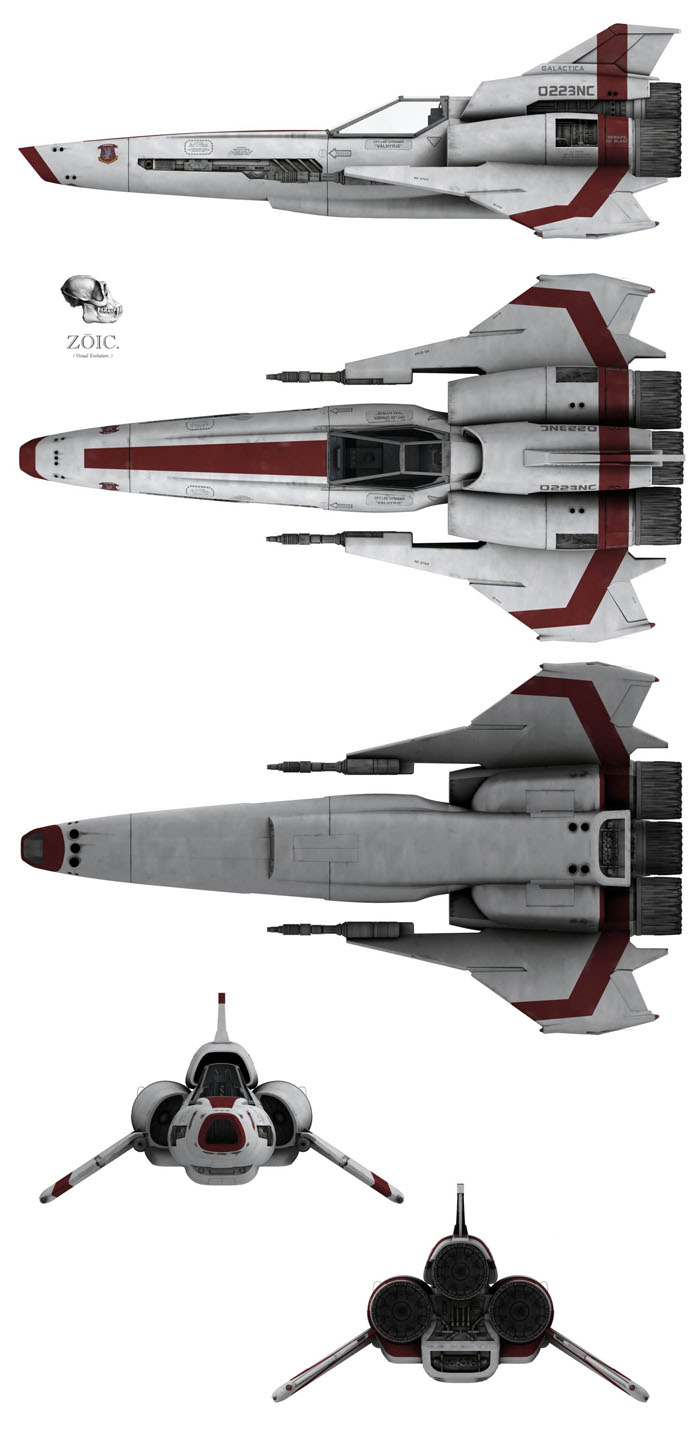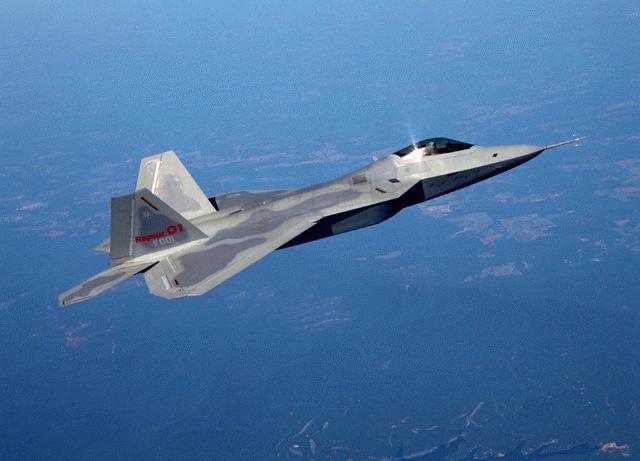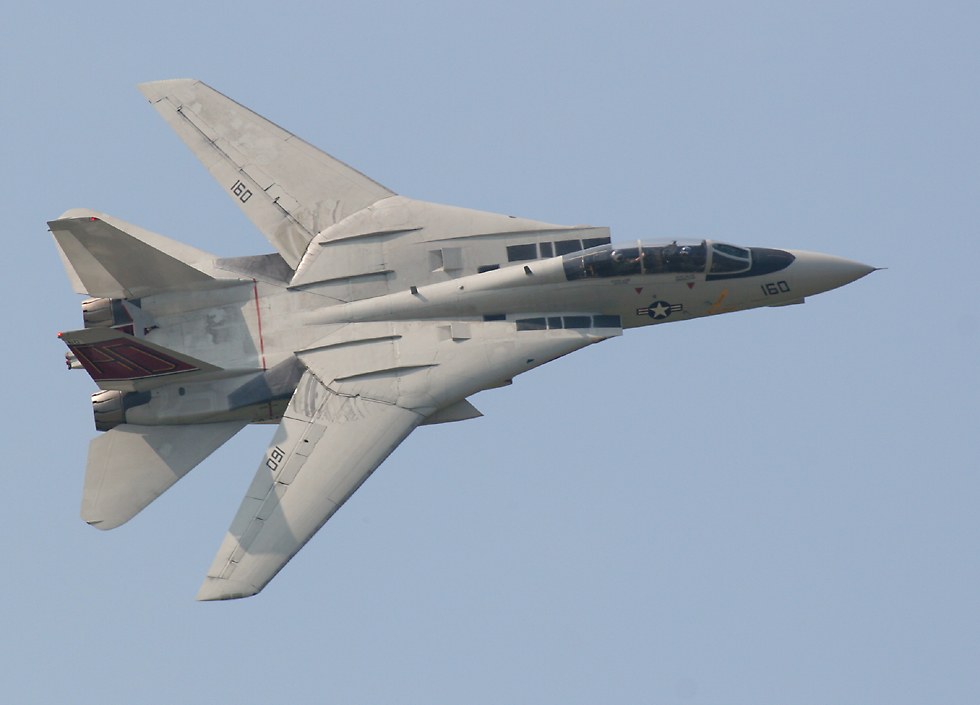Any browsing through a dedicated science fiction art forum, website, or social media page will have concepts of fantastic air- or spacecraft that are obviously designed with "Cool" in mind over any physics adherence. Which isn't a problem if you know you are chucking the science out the window to favor heavily in the fiction. I've done that too. The problem I have is when a body of science fiction mixes the hard with the fantasy. I certainly understand that for movies and television, budget requirements always mean artificial gravity, such as seen on the Battlestar Galactica, but if a production decides to ground a show in fact to present a more realistic and relatable world, then they shouldn't make one element plausible, and another similar element not.
 |
| shipschematics.net Used for reference. |
The Viper fighter doesn't stretch the imagination too far to be a believable craft. While I don't particularly like the fixed fan blades in the intakes of the engines (what is it ingesting for space operation?) and question the noise and vibration in the cockpit being butted against the engines, its design makes sense for a space fighter--and a space fighter only!
It's not hard to image where most of the mass (weight) of the Viper is, it's aft heavy with the nose shifting the center of gravity to right under the cockpit. That's where you want the CG for a space fighter because that puts the pilot under the least amount of forces during maneuvering. If you ever been on a school yard playground, you might recall that less centripetal force is felt in the center of a merry-go-round, than is felt on the outside. If the cockpit were at the nose, the Viper pilot would experience greater g forces, which in turn would limit the maneuverability the pilot could handle.
The wings themselves, while not meant to generate lift in space, of course, can act as booms for the reaction control thrusters, following the law of levers which means less force is needed to pivot around the lateral axis (wingtip to wingtip) than would be required if the thrusters where closer to the fuselage. But in the show, I don't think they actually do that. They may (and it is something I'll have to look out for) but we usually see thrusters firing from the engine pods. The difference in needed thrust wouldn't be that much anyway as the wingtips aren't that far from the fuselage.
The Viper makes a poor aircraft because with the CG so close to the engines, the tail will have a tendency to drop causing a pitch up condition and a stall. The nose of the Viper will have to produce a force to keep the nose down, whether it be from airfoils or thrust. Is it feasible for airborne Vipers to continuously fire their nose pitch down thrusters for atmospheric flight? It is something we wouldn't necessarily see in the show, but the absence of airfoils implies it must, although it demands the suspension of disbelief for fuel consumption, even if we are talking about high density tylium. A reasonable people would not design such waste into their machines if a less energy costly solution can be applied. Science fiction seems to violate this rule at every opportunity.
You might ask, "But what if the nose is heavy to balance the Viper?" The problem with that is that while air- and spacecraft are being used, they lose weight/mass through the consumption of fuels, oxidizers, life-support gases, servicing fluids, and ammunition, so the CG will move as the craft is flown. It is easier to use an airfoil that can be trimmed by the pilot to counteract the shifting CG when needed, than to have a complex system system of tanks and pumps to move consumed fluids around. Modern aircraft do this will fuel, and trimming is still needed. (Trimming is slightly deflecting either the whole flight control surface or a smaller tab set into the surface to maintain straight and level flight.)
Typically science fiction conceptual artist ignore the parts that make aircraft fly in attempts to make something seem more futuristic. As if ignoring physics is futuristic. A BSG aircraft should then look like an aircraft. Not like this design seen from Caprica.
I understand why it looks this way. There seems to be an unwritten (or maybe it is written) rule that any fighter or ship in science fiction must have obvious lineage design or the viewers will become confused. As if we are stupid. This is like saying that the F-22 must have some semblance to the P-51.
 A BSG aircraft wouldn't have to look anything like a Viper and fit into the design style of the show for the viewing audience to know that such aircraft were Colonial. After all, we see a vast diversity of spacecraft designs in the Rag Tag Fleet.
A BSG aircraft wouldn't have to look anything like a Viper and fit into the design style of the show for the viewing audience to know that such aircraft were Colonial. After all, we see a vast diversity of spacecraft designs in the Rag Tag Fleet.
As super cool awesome as it looks, the Caprica Viper has the same problem with the spaceborne Viper pretending to be an airplane: there is nothing keeping the nose down.
This Viper also has a natural tendency to point its butt at the ground and stop being an airplane.
Again, what is keeping that nose down? No thrusters on these old Iron Birds. Notice how the Japanese got it right in WW2 with the Shendin?
Note the nose horizontal stabilizer. That small added detail would make all the difference in the world in making the Viper-like aircraft more believable.







